Kuzhi Paniyaram
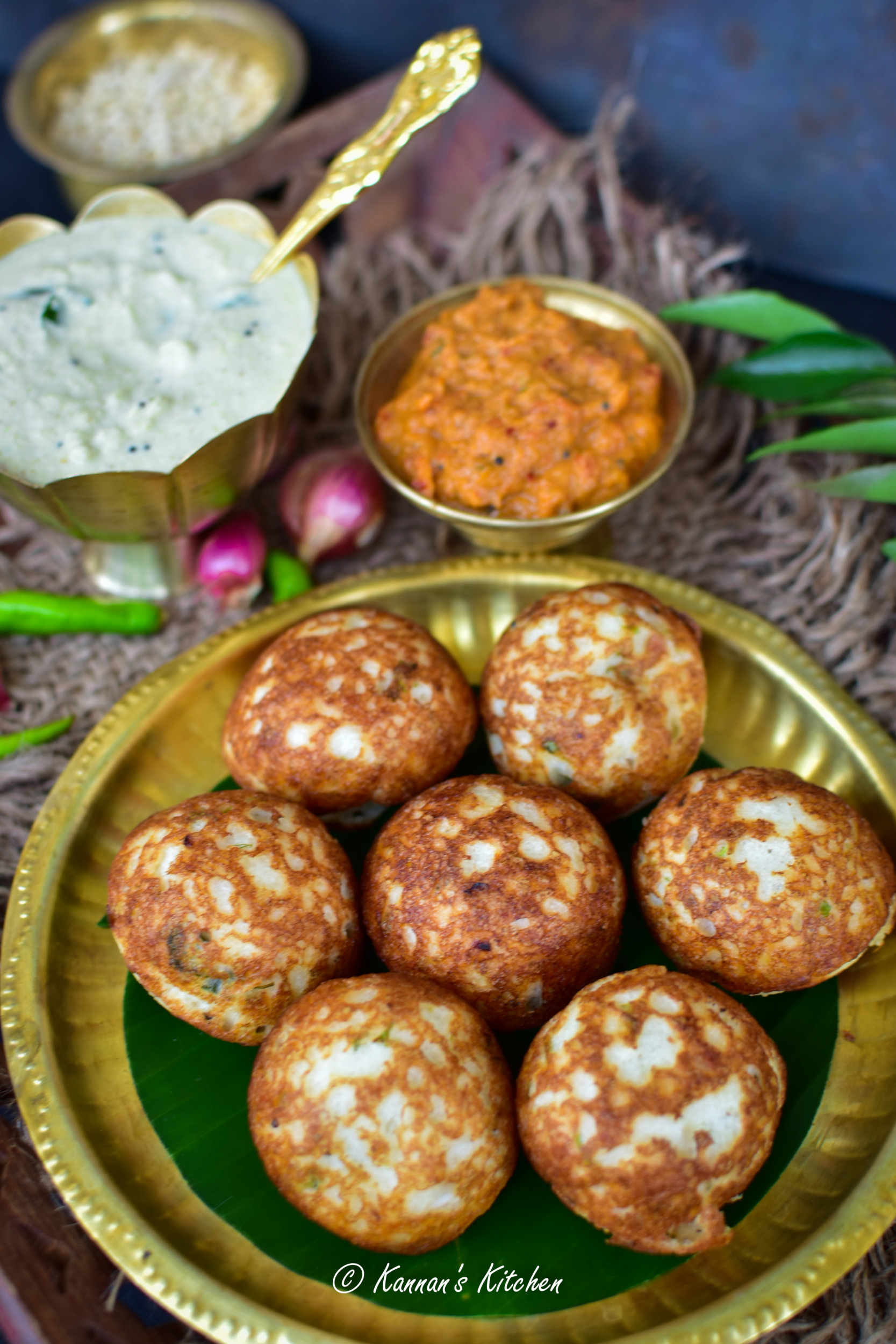
Kuzhi Paniyaram is a shallow fried dumpling made using fermented rice and urad dal batter and tempered with onions, chillies and some fresh coconut. It is a popular south Indian breakfast, especially in Tamil Nadu.
Kuzhi Paniyaram is known by various names like Paniyaram, Paddu, Gunta Ponganalu, Gundponglu, Guliyappa in different regions of southern India. The base ingredients for most of these variations are the same and the cooking technique is similar too, which makes use of a Paniyaram or Appe pan with cavities in it. In this recipe, we would be seeing the traditional way of making Kuzhi Paniyaram which originates from the Chettinad region of Tamil Nadu.
The characteristic of a good paniyaram is a golden brown and crisp outer layer and soft and fluffy texture on the inside. Traditionally, a heavy cast iron or brass paniyaram pan is used for cooking which yields a wonderful crisp texture and cooks through evenly from inside as well. Though you could use the non-stick pans available in the market, but I highly recommend using the cast iron pan for the best results.
I have seen many people who reuse the leftover idli or dosa batter to make paniyaram, which is not totally incorrect as we always intend to make some variations from the existing batter rather than having the same dosa or idli repeatedly. However, the batter for paniyaram is traditionally different from the regular idli or dosa batter and the proportion of the rice and dal varies slightly.
Back at our home, kuzhi paniyaram is a breakfast dish that is made at least once in two weeks. My wife would meticulously grind the batter over the weekends and this would serve as our breakfast for at least 2 to 3 days in the following week. So once the batter is ready, it is quick and simple to make this for breakfast even on busy weekdays for breakfast. A batch of paniyaram is more than enough for a person and it just takes the same amount of time as making two dosas.
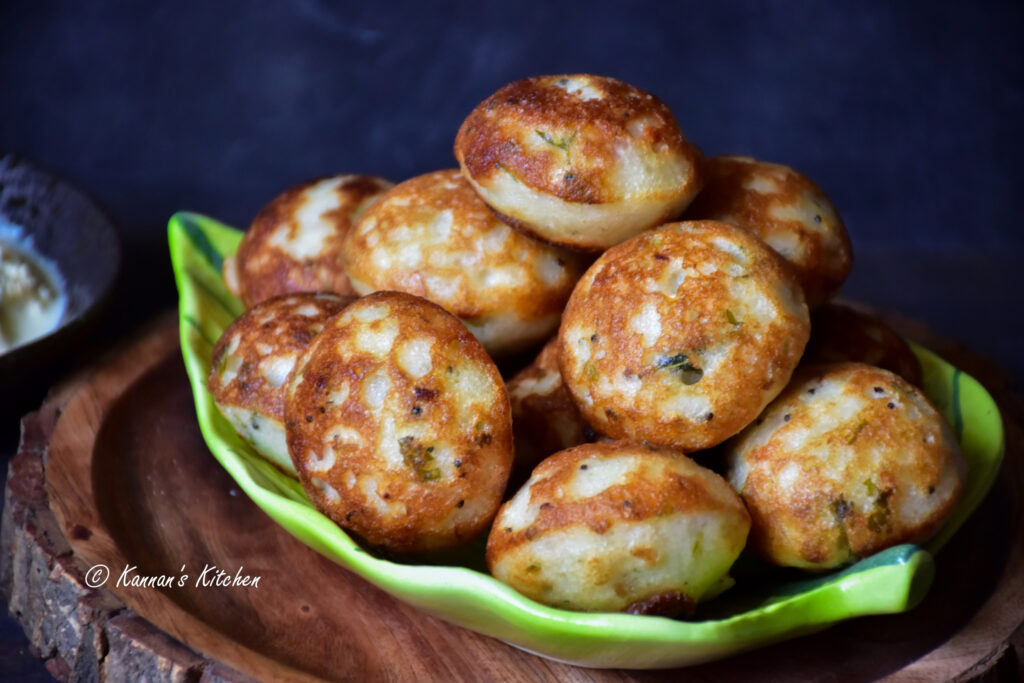
How to make Kuzhi Paniyaram
In this recipe, Idli rice, raw rice and urad dal are soaked together along with methi or fenugreek seeds for 4 to 5 hours and then ground to a smooth batter in either mixer grinder or wet grinder. The batter need not be very smooth, so we generally grind the batter for this in normal mixer grinder. So technically speaking, it is less hassle to grind this batter as compared to dosa or idli where the urad dal needs to ground separately first.
The batter needs to be fermented well (normally overnight) and then a tempering of mustard seeds, urad dal, green chillies, curry leaves and onion is added to the batter. Some finely chopped coconut slices and fresh coriander are added as well and cooked on medium flame in the paniyaram pan.
Serving Suggestion
Kuzhi Paniyaram is typically served for breakfasts along with a variety of chutney like coconut chutney, onion-tomato chutney or a spicy garlic chutney. Unlike idlis or dosas, sambar is totally optional for paniyaram. Kuzhi paniyaram is also an ideal choice for evening snacks along with a cup of strong filter coffee.

Kuzhi Paniyaram
Ingredients
- 2 cups Idli Rice
- ½ cup Raw Rice
- 1 cup Whole Urad Dal
- 1 tsp Methi or Fenugreek Seeds
- 2 medium Onions finely chopped
- 3 tbsp Finely chopped Coconut
- 4 Green Chillies
- 2 sprigs Curry Leaves
- 2 tbsp Finely Chopped Coriander Leaves
- 2 tbsp Oil and for cooking
- 1 tbsp Split Urad Dal
- 1 tsp Mustard Seeds
- ¼ tsp Asafoetida
- Salt to taste
Instructions
- Wash and soak idli rice, raw rice and whole urad dal in water along with methi seeds for 4 to 5 hours.
- Drain the water and grind the soak rice and dal along with 2 green chillies in mixer grinder to a smooth batter (consistency similar to that of Idli batter). Add water as required while grinding the batter. Add salt to the batter and mix well and ferment the batter overnight.
- In a pan, heat 2 tablespoons of oil and add mustard seeds and split urad dal. Once the mustard seeds sputter and urad dal turns golden, add 2 finely chopped green chillies and chopped curry leaves. Add a generous pinch of asafoetida.
- Now add finely chopped onion and sauté for a minute or two till the onions just turn slightly pink.
- Now add this mix to the batter and also add finely chopped fresh coconut pieces and coriander leaves.
- Mix the batter well and add little water and salt if required. The batter however must be slightly thick as shown in the image below.
- Heat the paniyaram or appe pan and grease some oil. Pour the batter in each of the cavity and add some more oil from the sides. Cover and cook on medium flame for couple of minutes or till the sides start becoming golden brown.
- Use a metal skewer to loosen the sides of each of the paniyaram and flip them. Add some more oil and cook for 2 to 3 minutes on the other side as well till they turn golden brown. Serve hot with chutney of your choice.
Notes
- Raw rice gives the crispness to the paniyaram and urad dal gives the fluffiness. This proportion works fine for the best balance of the two, however you could adjust these two ingredients to suit your taste.
- Methi seeds give the beautiful golden colour to the paniyarams, so do not skip this ingredient.
- In this recipe, I have ground half of the green chillies and used the remaining as finely chopped. If you are making this recipe for kids, you could avoid the finely chopped green chillies.
- Cook the paniyarams on medium flame, else they could be under-cooked from inside.
- If you do not eat onions, you could skip them in the recipe.
- You could also add some grated carrots to the batter to make it a veggie paniyaram.
- The finely chopped coconut pieces gives the paniyaram a nice crunch and taste.
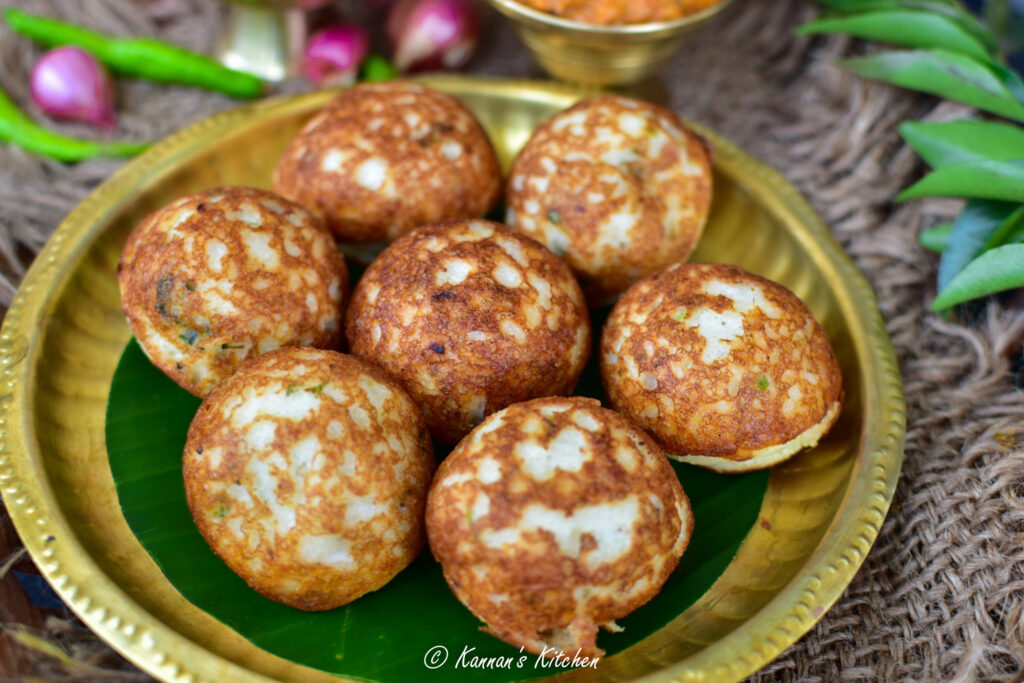


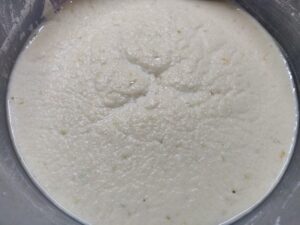
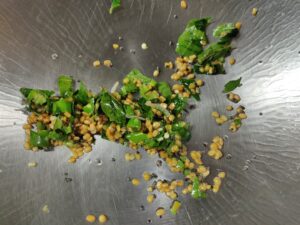

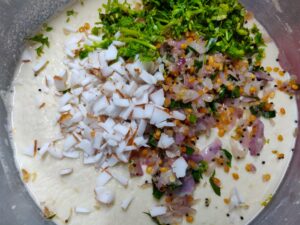
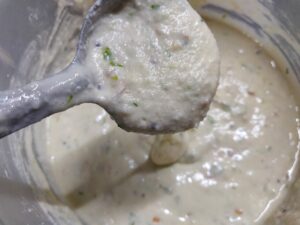
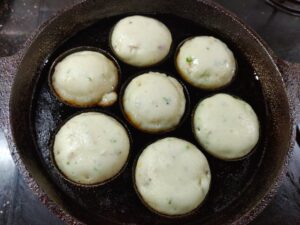
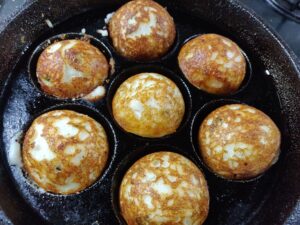
Very nicely explained and written Kannan!!
Thanks Divya 🙂
Detail explanation